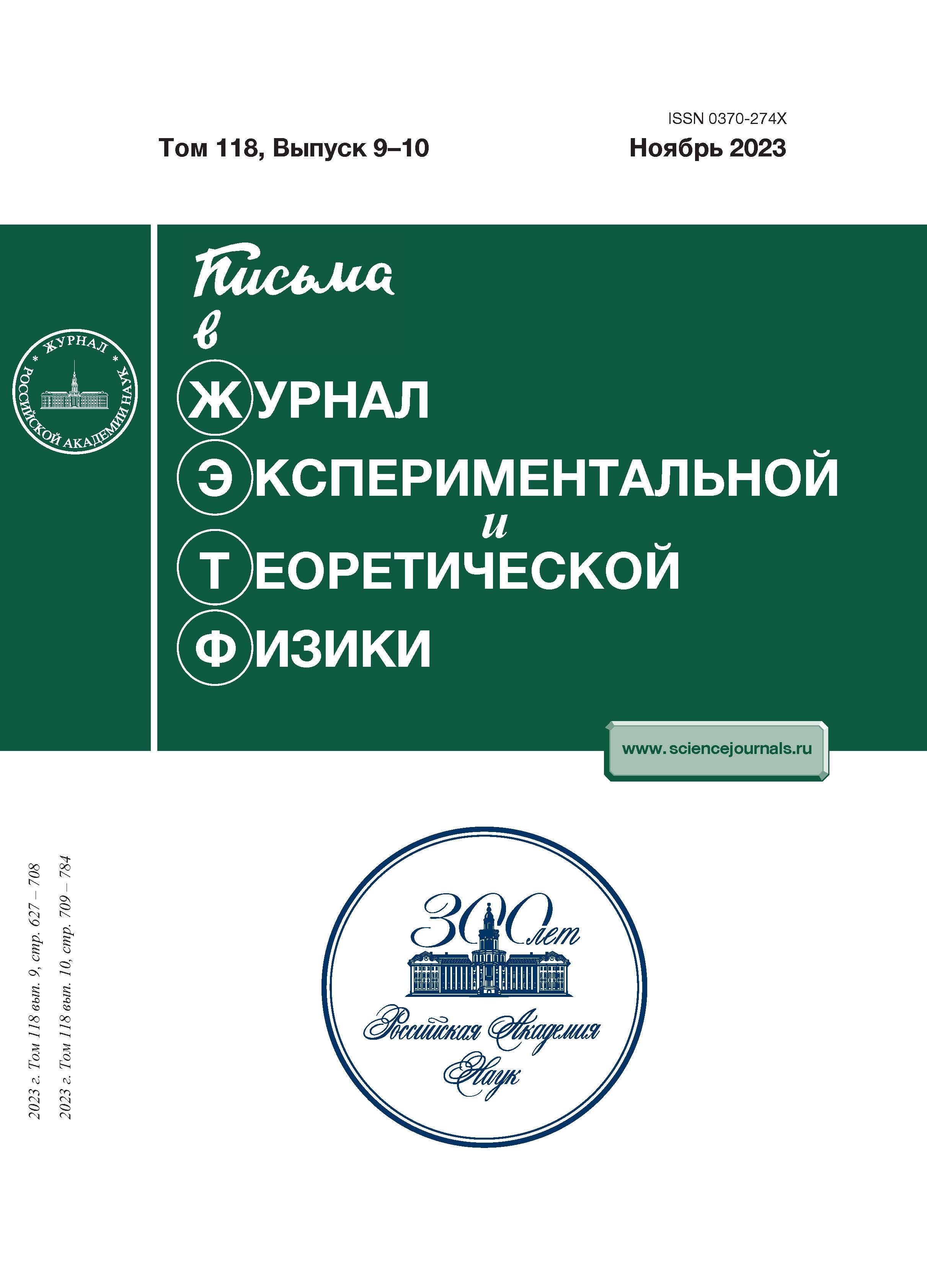Nonlinear Kinetic Inductance Sensor
- 作者: Vodolazov D.Y.1
-
隶属关系:
- Institute for Physics of Microstructures, Russian Academy of Sciences
- 期: 卷 118, 编号 9-10 (11) (2023)
- 页面: 769-775
- 栏目: Articles
- URL: https://vestnik.nvsu.ru/0370-274X/article/view/664241
- DOI: https://doi.org/10.31857/S1234567823220111
- EDN: https://elibrary.ru/PHBFUA
- ID: 664241
如何引用文章
详细
The concept of nonlinear kinetic inductance sensor (NKIS) of electromagnetic radiation is proposed. The idea is based on divergency of kinetic inductance
作者简介
D. Vodolazov
Institute for Physics of Microstructures, Russian Academy of Sciences
编辑信件的主要联系方式.
Email: vodolazov@ipmras.ru
603950, Nizhny Novgorod, Russia
参考
- J. Zmuidzinas, Annu. Rev. Condens. Matter Phys. 3, 169 (2012).
- K. Irwin and G. Hilton, Transition-Edge Sensors, in: Cryogenic Particle Detection. Topics in Applied Physics, ed. by C. Enss, Springer, Berlin, Heidelberg (2005), v. 99, p. 63.
- K.H. Gundlach and M. Schicke, Supercond. Sci. Technol. 13, R171 (2000).
- C.M. Natarajan, M.G. Tanner, and R.H. Hadfeld, Supercond. Sci. Technol. 25, 063001 (2012).
- F. Levy-Bertrand, T. Klein, T. Grenet, O. Dupre, A. Benoiоt, A. Bideaud, O. Bourrion, M. Calvo, A. Catalano, A. Gomez, J. Goupy, L. Grunhaupt, U. v. Luepke, N. Maleeva, F. Valenti, I.M. Pop, and A. Monfardini, Phys. Rev. B 99, 094506 (2019).
- H.G. Leduc, B. Bumble, P.K. Day, B. Ho Eom, J. Gao, S. Golwala, B.A. Mazin, S. McHugh, A. Merrill, D.C. Moore, O. Noroozian, A.D. Turner, and J. Zmuidzinas, Appl. Phys. Lett. 97, 102509 (2010).
- P. Szypryt, B.A. Mazin, G. Ulbricht, B. Bumble, S.R. Meeker, C. Bockstiegel, and A.B. Walter, Appl. Phys. Lett. 109, 151102 (2016).
- G. Coiffard, M. Daal, N. Zobrist, N. Swimmer, S. Steiger, B. Bumble and B.A. Mazin, Supercond. Sci. Technol. 33, 07LT02 (2020).
- F. Giazotto, T.T. Heikkila, G.P. Pepe, P. Helisto, A. Luukanen, and J. P. Pekola, Appl. Phys. Lett. 92, 162507 (2008).
- M. Kiviranta, J. S. Penttila, L. Gronberg, J. Hassel, A. Virtanen, and H. Seppa, Supercond. Sci. Technol. 17, S285 (2004).
- K. Maki, Progr. Theoret. Phys. (Kyoto) 29, 333 (1963).
- M.Yu. Levichev, I.Yu. Pashenkin, N. S. Gusev, and D.Yu. Vodolazov, Phys. Rev. B 108, 094517 (2023).
- P. Solinas, F. Giazotto, and G. P. Pepe, Phys. Rev. Appl. 10, 024015 (2018).
- F. Paolucci, Phys. Rev. Appl. 20, 014003 (2023).
- V. Lubsanov, V. Gurtovoi, A. Semenov, E. Glushkov, V. Antonov, and O. Astafiev, Supercond. Sci. Technol. 35, 105013 (2022).
- A. Kher, P.K. Day, B.H. Eom, J. Zmuidzinas and H.G. Leduc, J. Low Temp. Phys. 184, 480 (2016).
- J. Luomahaara, V. Vesterinen, L. Groenberg, and J. Hassel, Nat. Commun. 5, 4872 (2014).
补充文件









